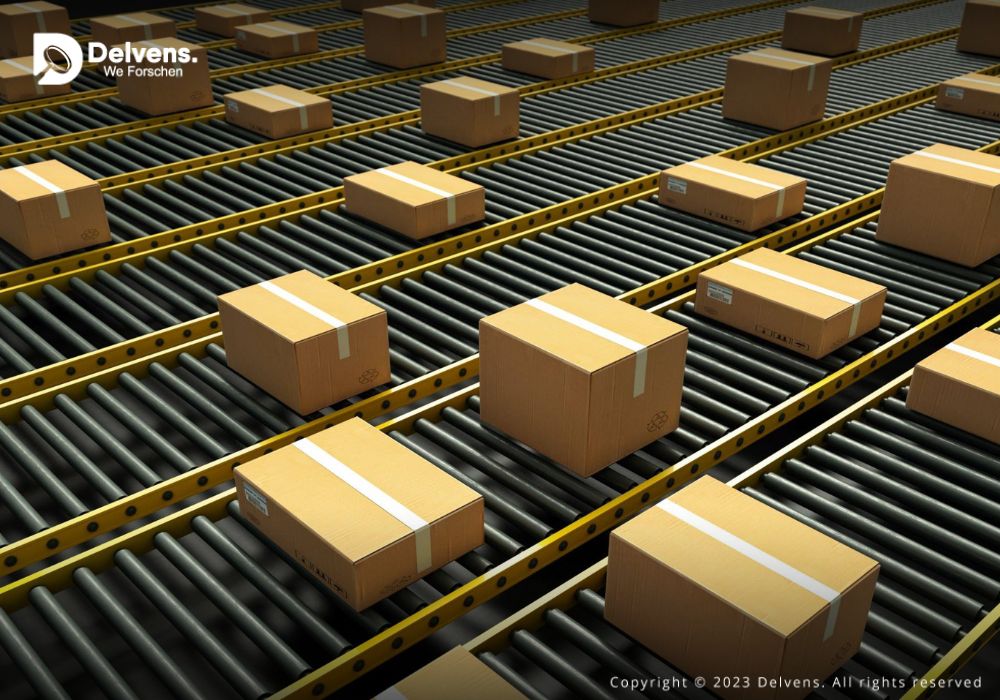
Warehousing Automation
Advancements in robotics, automation software, and sensor technologies have enabled smarter and more efficient material handling systems within warehouses and distribution centers. Automated guided vehicles (AGVs) are used to autonomously transport goods and materials around facilities based on optimized route planning algorithms. AGVs use indoor GPS, magnetic tape guidance systems, laser navigation, or vision-based guidance to navigate racks, shelves, and aisles without colliding. They can lift pallets and totes weighing up to 3,000 pounds with forklift-like arms and allow facilities to maximize space utilization.
A new generation of collaborative robots, or "cobots," are designed to safely work alongside human workers to pick, pack, and palletize inventory items. Cobots have intelligent vision systems, force sensors, and flexibility to handle irregular shapes and comply with safety standards. They increase productivity by performing repetitive, hazardous, or physically demanding tasks traditionally performed by human labor. Facilities benefit from reduced costs, injuries, and workforce needed for material handling activities.
Logistics Automation storage and retrieval systems (ASRS) have also gained popularity with the growth of e-commerce. ASRS use cranes, shuttles, or mini-loaders to swiftly retrieve and store pallets or totes in three-dimensional grid-based storage systems. They maximize cubic capacity and optimize inventory placement based on algorithms analyzing item usage patterns and turnover rates. ASRS allow facilities to store 4-5 times as many SKUs in the same physical space compared to manual shelving systems.
Logistics Automation and Shipment Processing
Packaging lines now leverage advanced robotics, vision systems, and IoT integrations for casepacking, palletizing, sealing, and labeling operations. Casepackers use flexible end-of-arm tooling to automatically group and pack varying item quantities into corrugated boxes or bundles at high speeds. Robotic palletizers skillfully arrange full boxes onto pallets in optimized layer patterns for safe transportation and storage.
Thermal transfer printers, inkjet systems, and RFID/barcode scanners automate application of shipment codes, addresses, tracking numbers, and return labels for visibility and proof-of-delivery validation. Integrations with warehouse management systems (WMS) and transportation management systems (TMS) allow real-time updates on order fulfillment status.
Logistics automation involves Goods-to-Person (G2P) shuttles or robots retrieving items from storage based on optimized pick paths provided by a WMS. They use vision, weight, and database lookups to confirm picks and eliminate errors. Pick-to-Light systems guide workers to locations for enhanced accuracy and productivity. Voice-directed systems provide turn-by-turn directions for assembly line-like picking processes.
Yard Management and Loading Dock Automation
Loading docks now deploy conveyors, tilt trailers, elevating docks, and other automated equipment to streamline trailer loading/unloading. Dock levelers, vehicle restraints, indication lights, sealing systems, and dock shelters are controlled by dock management software for worker safety and environmental protection.
Yard management systems (YMS) coordinate trailer positioning and dock assignment for optimized workflow. Telematics-integrated trailers advise when loading is complete to dispatch drivers efficiently. Some facilities deploy autonomous yard trucks to shuttle trailers between the yard and dock based on assignment instructions from the YMS.
Drones and Autonomous Mobile Robots
Drones inspect warehouse racking infrastructure, scan asset tags for inventory counts, and monitor temperature/moisture conditions of sensitive storage areas. New applications include conveying samples/documents, workplace safety checks, and point-to-point delivery of urgent shipments within campuses. Safety, battery life, and payload capacity limitations remain but continue advancing.
Autonomous mobile robots (AMRs) are industrial versions of self-driving vehicles used for internal transportation needs like moving inventory, carts, or materials between departments, filling online orders, or transporting products for quality inspections. Their flexible, driverless operation allows facilities to scale operations up or down quickly based on demand fluctuations.
Artificial Intelligence and Analytics
Artificial intelligence (AI) and machine learning techniques are incorporated into all areas of logistics technology. Pattern recognition algorithms continually analyze equipment sensor data to detect anomalies, predict maintenance needs, and recommend optimizations. Natural language processing interfaces improve human-robot collaboration.
Supply chain analytics dashboards use BI tools to provide actionable insights into metrics like inventory accuracy, order fulfillment lead times, congested zones, labor productivity and more. Predictive algorithms estimate future facility and transportation capacity requirements, demand spikes, delays and inventory replenishment needs. Prescriptive recommendations help managers proactively address issues, cut costs and boost customer service levels.
Overall, modern logistics automation solutions are transforming operations through improved productivity, reduced costs, minimized errors and maximized inventory visibility across the entire supply chain. Intelligent, data-driven technologies will continue streamlining material and information flow for competitive advantages as markets and customer expectations evolve rapidly in the digital age.
Get more insights on Logistics Automation


































